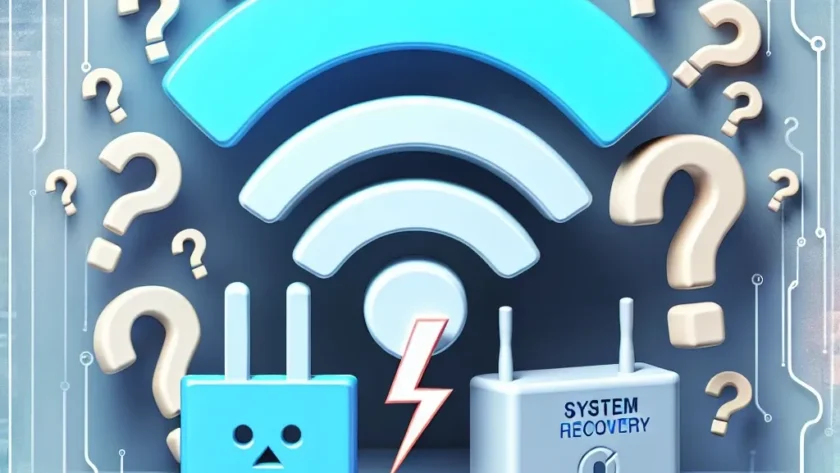After performing a system restore, it’s not uncommon to encounter issues with your WiFi adapter. This can be frustrating, especially if you rely on a stable Internet connection for work or leisure. Let’s delve into the potential reasons why your WiFi adapter may not be working post-system restore, and explore some effective troubleshooting tips to resolve the issue.
Common Reasons for WiFi Adapter Issues Post-System Restore
A system restore can reset your computer to a previous state, but it can sometimes disrupt the functionality of your hardware components, such as the WiFi adapter. Below are some common reasons for this issue:
- Driver Issues: The system restore may have reverted your WiFi adapter driver to an outdated version, causing compatibility issues.
- Corrupted System Files: The restore process can sometimes leave you with corrupted or missing system files, which can impact the adapter.
- Network Settings: The system restore might have reset your network settings to their default state, preventing the WiFi adapter from working correctly.
- Hardware Issues: Physical problems with the WiFi adapter itself may also arise coincidentally after a system restore.
Driver Issues
One of the most prevalent reasons for WiFi adapter problems after a system restore is related to driver issues. System restores can revert your driver to a previous or even incompatible version. To check if this is the issue, you can:
- Open Device Manager.
- Find your WiFi adapter under the Network adapters section.
- Right-click on it and choose Properties.
- Navigate to the Driver tab to see the driver version and date.
Updating Drivers
If the driver is outdated, consider updating it. You can do this by:
- Right-clicking the WiFi adapter in Device Manager.
- Selecting Update Driver.
- Choosing Search automatically for updated driver software.
Rollback Drivers
Sometimes, the updated driver might cause issues too. If you suspect this, you can:
- Right-click your WiFi adapter in Device Manager.
- Go to Properties > Driver tab.
- Select Rollback Driver if the option is available.
Corrupted System Files
Corrupted system files can result from system restores, leaving components like the WiFi adapter dysfunctional. Running the built-in System File Checker (SFC) tool can help:
- Open Command Prompt as an administrator.
- Type
sfc /scannowand press Enter. - Wait for the scan to complete and follow any on-screen instructions.
Resetting Network Settings
Restoring system settings can revert network configurations to a default, possibly conflicting with your WiFi adapter. To reset your network settings:
- Go to Settings > Network & Internet.
- Select Status.
- Scroll down to and click Network reset.
- Follow the prompts to reset and restart your PC.
Hardware Issues
Although less common, sometimes the WiFi adapter could have hardware issues that coincidentally occur after a system restore. To rule this out, you can try:
- Connecting to a different WiFi network to ensure it’s not a network-specific problem.
- Testing with an external USB WiFi adapter.
Additional Troubleshooting Tips
If the steps above don’t solve your WiFi adapter issue, consider these additional tips:
Check for Operating System Updates
Operating system updates often include fixes for hardware compatibility issues:
- Go to Settings > Update & Security.
- Select Check for updates and install any available updates.
Use System Restore Again
If the problem persists, you might want to undo the current system restore. To do this:
- Open Control Panel and go to Recovery.
- Select Open System Restore and follow the wizard to revert to a different restore point.
Reinstall the Wireless Adapter
Reinstalling the device can also fix lingering driver or software issues:
- Open Device Manager.
- Right-click on the WiFi adapter and select Uninstall device.
- Reboot your computer; Windows should automatically reinstall the device.
Table of Common Actions and Effects
| Action | Effect |
|---|---|
| Check Driver Version | Identify if the driver is outdated or incompatible |
| Update Driver | Install the latest driver for better compatibility |
| Rollback Driver | Revert to a previously stable driver version |
| Run SFC Tool | Fix corrupted system files |
| Network Reset | Reset network settings to troubleshoot connectivity issues |
| OS Update | Implement bug fixes and hardware compatibility improvements |
| Reinstall Adapter | Resolve potential driver or software glitches |
Conclusion
WiFi adapter issues after a system restore can be frustrating, but they are generally solvable with a few troubleshooting steps. Whether it’s updating drivers, running built-in Windows tools, or tweaking network settings, there are multiple avenues to explore. By systematically addressing each potential cause, you can usually restore your WiFi adapter to full functionality.

